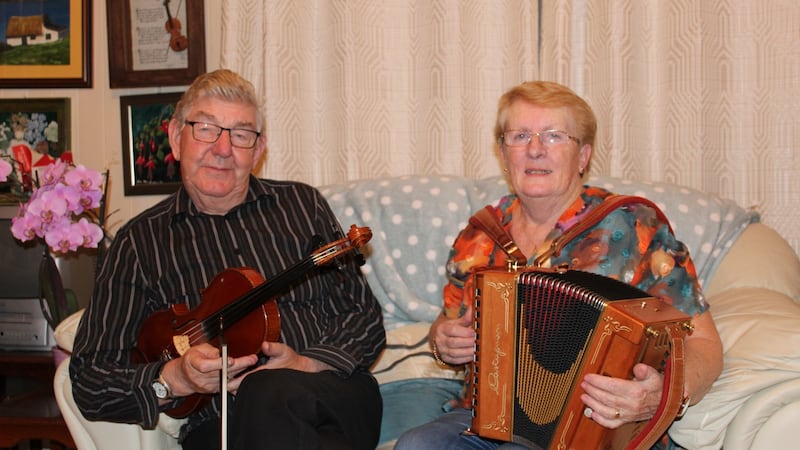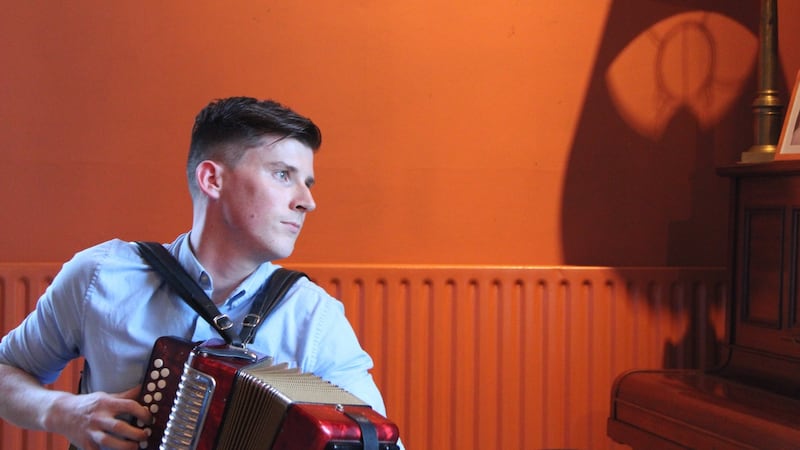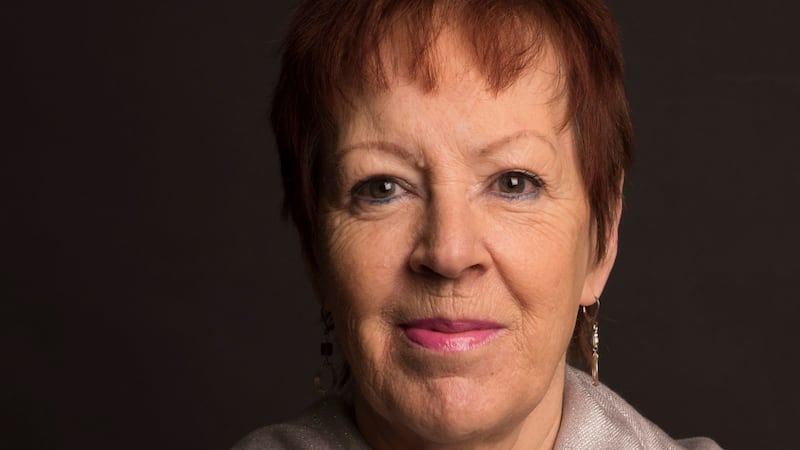This year’s TG4 Gradam Ceoil Awards reflect an eclectic mix of recipients that includes musicians, singers and indefatigable champions of Irish traditional music. Their influences stretch from the bowels of Sliabh Luachra to Sunday afternoon sessions in Birmingham, London and late-night sessions in Donegal, Roscommon and beyond.
This year’s traditional singer of the year is Birr-born Thomas McCarthy. Born of a Traveller family, McCarthy moved to England with his family at the age of 10, but there’s ne’er a trace of Old Blighty in his accent after all these years. For McCarthy, singing was indelibly imprinted in his DNA, courtesy of his mother, Mary.
“My mother was fabulous,” he says. . “She was a great singer, and she taught us all when we were very young. It was she who instilled the songs in us. She’d sit us down on a Saturday when we were five, six and seven years of age and she would just teach us her songs. And we’d have great fun altogether. But if you weren’t paying full attention, she would tell you very quickly. You’d have to be serious about it.”
Thomas' most recent and widely lauded album, released in 2017, is a collaboration with Romani gypsy, Viv Legg, titled Jauling the Green Tobar, where "jauling" is a Romani word for walking and "tobar" an Irish Traveller word for the road. The relationship between his ethnic identity and his musical identity are unquestionably intertwined, Thomas acknowledges.
“They are linked – for sure,” he says. “Every Travelling family up to the 1970s, had a store of songs. It would pay them to have a store of songs, going around the country. They would meet people and songs were a way of getting to know people: it was home entertainment long before there was radio and television. Actually, I remember my grandfather was the first man in the town of Birr to get a radio and when they brought the radio into the house, half the town turned up to listen to it. And my grandfather said: take that machine out of the house. It’s a conversation killer.”
McCarthy’s love of his own language, Cant or The Gamon, is knitted through his songs too.
“I like to weave in our language. It’s like the Irish language: it’s our language, but it’s not being promoted properly, he says. “Travellers are very lucky though: I don’t know one Traveller who doesn’t know how to speak our language.”
‘Lost something’
McCarthy is acutely aware of the recent presidential election results, where Peter Casey polled 23 per cent, following controversial remarks about the travelling community.
“Politicians will do anything to get elected,” he offers. “And they’ll always take up the Traveller card. It’s a kind of a downer, and the fact that he got into second position leaves a stain on the country. What is our generation stooping to? I think we’ve lost something since the Celtic Tiger. It’s so sad to see that lovely old way that people had, disappeared. It breaks my heart.”
Does he see storytelling and singing as a bridge builder between the travelling community and the settled community?
“Oh it is, definitely,” he offers enthusiastically. “In the old days. I’ve heard stories of Travellers being welcomed into cottages for over a week, with their songs and stories. And I’ve been out in America, where I’ve told stories to underprivileged kids in Washington, and their reaction is the same as among children in Ireland. It’s just fabulous to be given that opportunity to make connections.”
McCarthy recently returned from a gathering in Wales where he ran workshops for young singers.
“I was working with 14 or 15 young gypsy girls in Wales, and it was wonderful”, he recounts. “All of them were aged between nine and 15 years. It was quite comical because you’d think they’d be more interested in Lady Gaga or something like that!”
Tarring everyone with the same brush is a tired old trick, McCarthy believes.
“We’re not all the same” he says. “None of my family ever hurt anybody and the generations who went before us would turn in their grave if they thought that anyone would. We were brought up to work hard, to pay our taxes and to get on with our life.”
![Catherine McEvoy: winner of traditional musician/Gradam CeoilTG4 award. “There’s another strand [of Irish music] that’s way out there. You might call it Irish music, but it’s not particularly traditional. Photograph: Frank Gavin](https://www.irishtimes.com/resizer/v2/U3OQIOL43BJBLGKNLREIFZDF54.jpg?auth=37e706a995832d4cb7acace30bcd54e733cddb06aaef8f0617597bb074d7e676&width=800&height=450)
‘Unexpected variations’
This year’s traditional musician of the year is Catherine McEvoy. A flute player who plays in the Sligo/Roscommon style, she was born in Birmingham, but has lived in Ireland for many years, and teaches accordion, flute, percussion skills and singing in ChildVision, in Drumcondra.
Fiddler Seamus Connolly has described McEvoy’s playing as “having a lift that is exciting, colourful and electrifying, coupled with unexpected variations”.
Growing up, McEvoy’s musical heroes were all from the west of Ireland, and included flute players Josie McDermott, Seamus Tansey, Matt Molloy and Peg McGrath. With her brother John, a widely respected fiddle player, her musical world encompassed everyone from the great Sligo fiddler Michael Coleman to The Dubliners. But her road to becoming a musician was one paved with lessons all of her own making.
“I heard a girl playing the accordion and it awoke something in me. I loved it.”, she laughs. “Later, I started knocking out a few old tunes on the whistle. There was nobody teaching in Birmingham so I started getting records and just listening to stuff. Just listening and listening and listening.”
Life and music are one and the same, it seems. “For me, throughout my life, I just feel good when I play music. It was purely a love of the music and a feelgood feeling that kept us playing.”
McEvoy is astounded at the leap which she sees traditional music having taken in the past decade.
“There are so many people playing now, and many of them are fantastic classical musicians as well.
“There’s several strands in traditional music now, whereas when I was learning I think there was just one. Now, you have the very traditional strand, and one that is ‘traditional’ but bordering on the commercial, and then another strand that’s way out there. You might call it Irish music, but it’s not particularly traditional, in that it’s influenced by eastern European music or other sources. Which is great. There’s room for everything. The diversity is fantastic.”

Husband and wife duo Nickie and Anne McAuliffe are the recipients of this year’s lifetime achievement award. Nickie has taught music for almost 50 years (and this writer was a none-too-successful pupil some four decades ago), and he’s the go-to person for any musician in search of a tune name or provenance. He is a walking encyclopaedia of Irish music.
“Yerra, I’ve a great interest in the background to tunes,” he admits. “Knowing the background to tunes for the last 500-600 years: of harpers, and pipers and so on. I think that’s important. Everything is a story and a story is everything, and there are some great stories behind the tunes: how and why they were composed.” Anne McAuliffe shares Nickie’s low-key love of the music.
“We’re not ones for the limelight, but sure, ‘tis great altogether,” she admits quietly, when asked of her reaction to receiving this laurel.
Times have changed – and music is a winner, she believes. “Young players are learning and progressing much faster these days,” she says. “Look at all the classes and all the opportunities that are there now. It’s amazing: they have the best of instruments and all the music they can listen to. Sure, it’s fabulous really.”
And the Gradam goes to….

Traditional musician/Gradam Ceoil TG4: Catherine McEvoy
Young traditional musician/Ceoltóir óg TG4: Conor Connolly
Traditional singer/Amhránaí TG4: Thomas McCarthy
Comhar cheol/Cumadóireacht TG4: Tríona Ní Dhomhnaill
Outstanding contribution/Gradam comaoine: Brendan Mulkere
Lifetime achievement/Gradam saoil: Nickie and Anne McAuliffe













